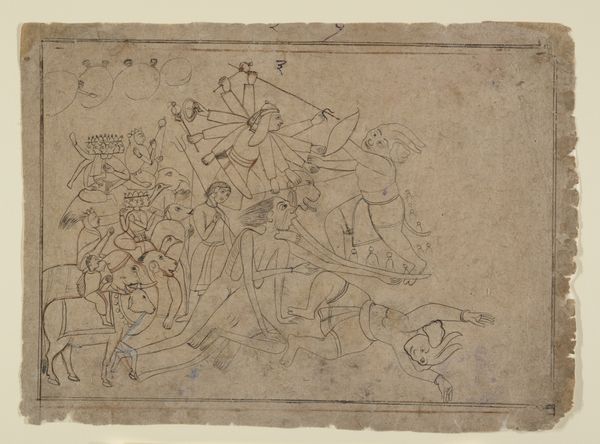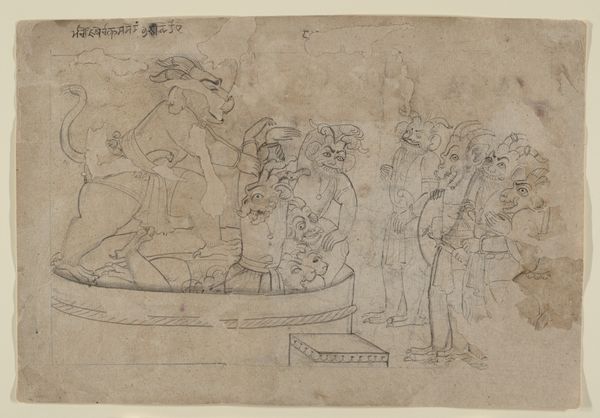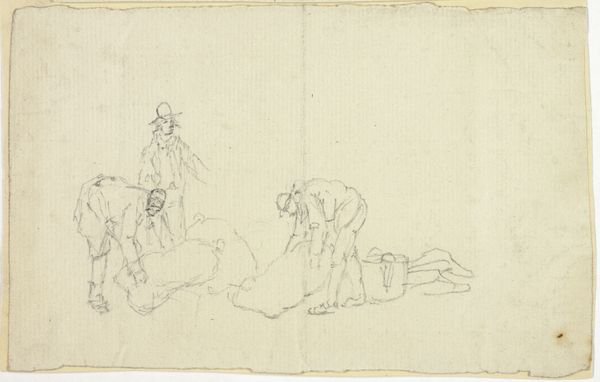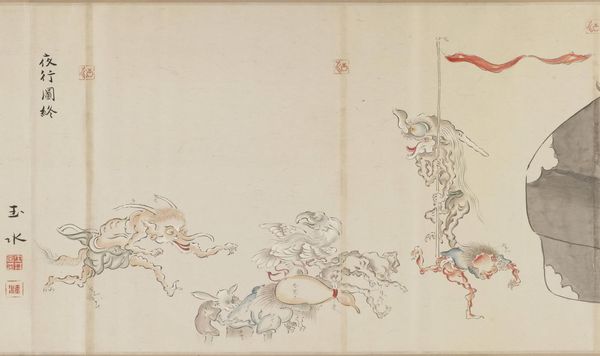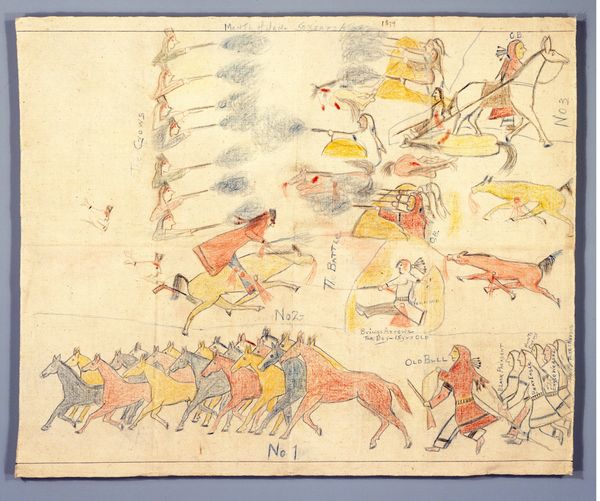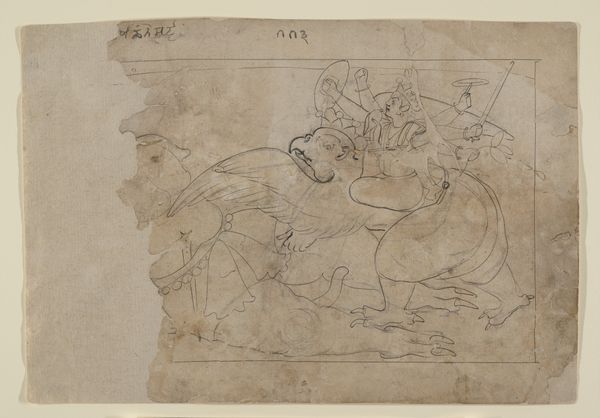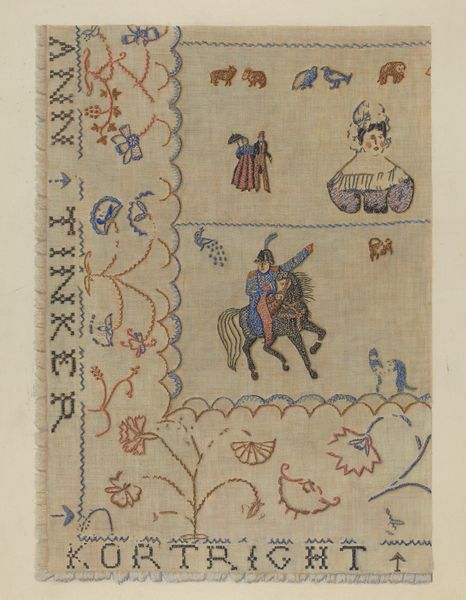
drawing, paper, ink-on-paper, watercolor, ink
#
drawing
#
narrative-art
#
asian-art
#
landscape
#
figuration
#
paper
#
ink-on-paper
#
watercolor
#
ink
Dimensions: 7 x 5 3/4in. (17.8 x 14.6cm)
Copyright: Public Domain
This ink on paper drawing shows two horses standing over a slain tiger. The horse, throughout history, appears as a symbol of nobility, power, and triumph. Its elaborate caparison here emphasizes status, a motif echoing across cultures, from Roman equestrian statues to Renaissance portraits of kings. Yet, observe the fallen tiger, pierced by a blade. The tiger, in contrast to the horse, often represents raw, untamed power, a force of nature. Its defeat here, reminiscent of mythical beast slayers, signals a conquest over primal instincts, a recurring theme in art. This juxtaposition can be seen in the Greek myth of Heracles battling the Nemean lion, where the hero’s victory symbolizes civilization’s triumph over chaos. Consider, too, how these symbols evoke deep, subconscious responses. The primal fear of the wild, embodied by the tiger, gives way to the reassuring strength of the horse, promising control. It’s a powerful play of emotions, resonating through the ages. This symbolic struggle—the ongoing negotiation between chaos and order—continues to resurface, ever-evolving, in our collective visual memory.
Comments
No comments
Be the first to comment and join the conversation on the ultimate creative platform.
